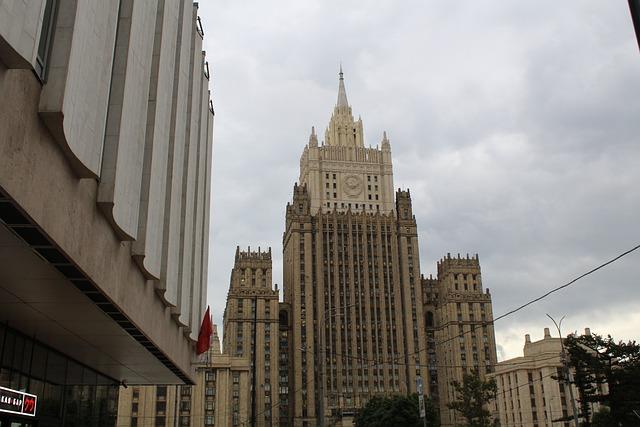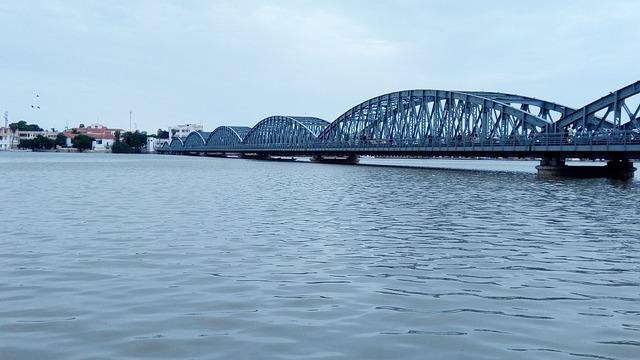In a historic turn of events, Senegal has officially reconciled with one of AfricaŌĆÖs oldest rebel groups, marking a significant step toward lasting peace in a region long marked by conflict. For decades,the Movement of Democratic Forces of Casamance (MFDC) has engaged in a sporadic insurgency in the southern Casamance region,fueled by grievances over autonomy and cultural identity. The recent agreement signifies not only a potential end to the violence that has claimed thousands of lives and displaced many more, but also highlights Senegal’s commitment to fostering dialogue and healing in a contry renowned for its stability amidst regional turmoil.As stakeholders reflect on the implications of this landmark resolution, the path to reconciliation offers insights into the complexities of peacebuilding in Africa and the vital role of inclusive governance. This article examines the past context of the conflict, the details of the reconciliation agreement, and the potential impact on Senegal’s socio-political landscape moving forward.
Reconciliation Achieved: Understanding Senegal’s Historic Peace Agreement with Rebel Groups
After decades of strife, Senegal has taken significant strides towards lasting peace with its long-time rebel groups, signaling a major shift in the region’s socio-political landscape. The historic peace agreement marks the end of one of Africa’s oldest conflicts, characterized by violent escalations and a series of failed negotiations. Key elements of this agreement involve:
- Amnesty provisions: Participants in the rebel movements are granted amnesty, allowing them to reintegrate into society without the fear of prosecution.
- Political portrayal: The agreement ensures that members of the rebel groups receive positions within the local and national political frameworks.
- economic growth initiatives: A pledge for economic investments in the affected regions aims to address the root causes of the conflict.
The negotiation process has showcased the potential for dialogue and compromise as the government prioritized inclusiveness and community engagement. Additionally, the role of international mediators has facilitated trust-building measures, leading to a more robust framework for peace. Highlighting this transition, the agreement includes specific timelines and accountability mechanisms such as:
| Milestone | Timeline | Responsibilities |
|---|---|---|
| Disarmament | 6 months | Rebel leaders to oversee the process |
| Integration | 1 year | Government bodies to facilitate training programs |
| Economic Projects | 2 years | Joint task force including local communities |

The Role of Regional Diplomacy in Ending Long-Standing Conflict in Senegal
The reconciliation process between the Senegalese government and the rebel group has underscored the significant role of regional diplomacy in mediating and resolving long-standing conflicts. Over the years, Senegal’s political landscape has been marred by tensions, primarily in the Casamance region, which has experienced unrest since the 1980s. Diplomatic efforts led by neighboring countries and regional bodies such as the economic Community of West African States (ECOWAS) have been pivotal in fostering dialogue and building trust between conflicting parties. By providing a neutral platform for negotiations and encouraging local participation in peace talks, thes diplomatic initiatives have facilitated a more extensive understanding of the issues at hand, paving the way for mutually beneficial agreements.
Key elements of recent diplomatic efforts include:
- Engagement of local leaders: Involving grassroots actors has helped address the root causes of the conflict and gain community support.
- Institutional frameworks: Establishing protocols for dialogue has ensured a structured approach to peace negotiations.
- International collaboration: Partnerships with organizations such as the United Nations have provided necessary resources and expertise for conflict resolution.
The outcome of these efforts is a testament to the crucial importance of regional diplomacy in conflict resolution, demonstrating that sustainable peace is achievable when collaborative approaches are embraced underpinned by mutual respect and understanding.

Community voices: The Impact of Reconciliation on Local Populations in Senegal
In the wake of the recent peace agreement, local populations in Senegal are experiencing both profound transformation and renewed hope. The reconciliation process has fostered a climate of trust and cooperation, enabling communities to rebuild relationships that had been strained for decades. Residents, once divided by conflict, are now finding common ground, actively participating in dialogues aimed at addressing long-standing grievances. Key aspects of this shift include:
- Community Engagement: Local forums have emerged, allowing citizens to voice concerns and contribute to peacebuilding efforts.
- Economic Opportunities: Increased investment in local projects has led to job creation and improved infrastructure,enhancing quality of life.
- Cultural Reconciliation: Festivals and events celebrating local heritage are being organized, promoting unity and cultural pride.
The societal impact of reconciliation is also evident in the healing narratives shared by those directly affected by the conflict. Personal stories of loss and resilience are circulating, acting as both a cathartic release and a powerful reminder of the cost of division.A recent survey conducted across various communities illustrates this sentiment:
| Indicator | Before Reconciliation | After Reconciliation |
|---|---|---|
| Trust in Neighbors | 35% | 75% |
| Participation in Community Meetings | 20% | 60% |
| Support for Local Initiatives | 15% | 55% |
This data not only underscores the shift in local dynamics but also signals a brighter, more unified future for all Senegalese as they embark on this journey of reconciliation together.

Lessons Learned: Key Insights from Senegal’s Approach to Conflict Resolution
Senegal’s resolution of its longstanding conflict with the rebel group demonstrates the power of dialogue and inclusivity in peace processes. Key insights from this approach highlight several critical elements that contributed to successful negotiations:
- Engagement of Multiple Stakeholders: Involving local communities, civil society, and international organizations fostered a collaborative atmosphere.
- Recognition of Grievances: Acknowledging historical injustices and the needs of marginalized groups helped to build trust.
- Flexibility in Negotiations: The willingness to adapt terms and consider the perspectives of all parties facilitated more effective discussions.
- Focus on Development: Integrating socioeconomic development initiatives in the peace agreement ensured long-term stability.
Additionally, the strategy emphasized the importance of creating a robust framework for ongoing dialogue. Establishing a monitoring body to oversee the terms of the agreement was crucial in maintaining peace. Key components of this framework include:
| Component | Description |
|---|---|
| Community Involvement | Engaging local leaders in decision-making processes. |
| Regular Assessments | Conducting periodic evaluations of the peace agreement’s impact. |
| Conflict Resolution Mechanisms | Implementing systems for addressing any arising disputes. |
| Education and Awareness | Promoting peace education in schools and communities. |

future Challenges: Ensuring Lasting Peace and Development in the Region
The resolution of one of Africa’s longest-standing conflicts marks a pivotal moment, yet it ushers in a new set of obstacles. The intricacies of reconciliation necessitate a multifaceted approach to ensure stability. Essential to this is effective governance, which fosters trust among previously warring factions. Local leaders and national authorities must collaborate to implement policies that promote inclusivity. Moreover, addressing the underlying socio-economic disparities that fueled the conflict is critical:
- Job Creation: Developing programs that focus on employment opportunities for youth.
- Education: Enhancing access to quality education to promote social cohesion.
- Infrastructure: Investing in essential services to improve living standards.
Additionally, sustainable peace depends on international support to strengthen local institutions. Stakeholders must prioritize long-term development initiatives to prevent any resurgence of violence. This effort can be fortified by engaging civil society and grassroots organizations that understand community needs. Establishing constructive dialogue channels will help mitigate grievances as they arise:
| Key Areas of Focus | Expected Outcomes |
|---|---|
| Conflict Resolution Training | Empowered leaders to address disputes amicably |
| Community Engagement | Stronger ties between different groups |
| Economic Development Programs | Increased innovation and local enterprise |
Investment Opportunities: Harnessing Stability for Economic Growth in Senegal
As Senegal successfully navigates its long-standing conflict with rebel groups,the nation is poised to tap into a wealth of investment opportunities that leverage this newfound stability. The cessation of violence not only provides a secure environment for foreign investment but also enhances the attractiveness of key sectors such as tourism, agriculture, and infrastructure development.Investors can expect a burgeoning market characterized by an expanding consumer base and improved logistical frameworks,essential for sustainable growth.
In particular, the agricultural sector stands to benefit substantially from increased investment, with Senegal’s abundant natural resources offering fertile ground for projects in agro-processing and sustainable farming. The following sectors are primed for investment:
- Renewable Energy: With a focus on solar and wind projects, investors can contribute to national energy goals while capitalizing on emerging demand.
- Technology: The digital landscape in Senegal is rapidly evolving, presenting opportunities for tech startups and IT infrastructure.
- Real Estate: An influx of domestic and international migrants creates demand for housing and urban development.
| Sector | Investment Potential |
|---|---|
| Agriculture | High ŌĆō Agro-processing and exports |
| Tourism | Medium ŌĆō Eco-tourism and cultural experiences |
| Real Estate | High ŌĆō Urban development projects |
With these opportunities at hand,investors are encouraged to engage with local stakeholders and government initiatives aimed at fostering a conducive business environment. As the nation embarks on this path toward economic revitalization, the collaboration between international partners and local enterprises will be crucial for steering Senegal towards a prosperous future.

In Retrospect
As Senegal embarks on a new chapter, the conclusion of one of Africa’s oldest conflicts represents not only a pivotal moment for the nation but also a hopeful signal for regional stability and reconciliation across the continent. The successful negotiation between the government and the rebel group marks a significant achievement in peace-building efforts, reflecting Senegal’s commitment to dialogue and inclusivity. As both parties work together to address the longstanding grievances that fueled the conflict, the potential for healing and development emerges, benefiting not just Senegal but the broader West African community. The international community watches closely, recognizing the importance of this reconciliation. It serves as a powerful reminder that even amidst protracted struggles, the possibility of peace and unity remains. Moving forward, Senegal’s journey may well serve as a blueprint for conflict resolution and reconciliation in othre regions facing similar challenges.







